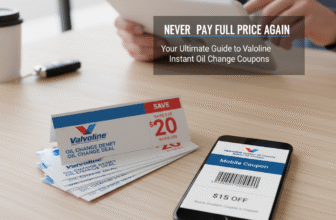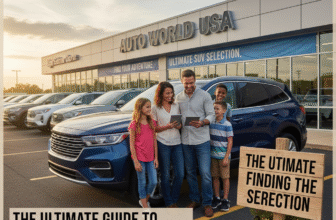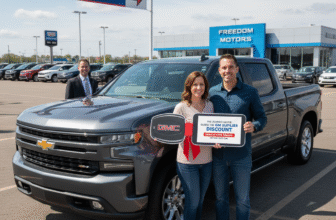
The Ultimate Guide to Finding the Perfect Cargo Van for Sale in the USA
Whether you’re a small business owner ready to level up your operations, a tradesperson tired of cramming tools into a pickup truck, or an adventurer dreaming of life on the open road, the search for the perfect cargo van is a significant step. It’s more than just buying a vehicle; it’s an investment in your livelihood, your efficiency, and your dreams. But with so many options flooding the market, from towering high-roof models to compact city slickers, how do you navigate the listings and find the one that’s truly right for you? This comprehensive guide will walk you through everything you need to know about finding, inspecting, and purchasing a cargo van that will serve you reliably for years to come.
Step 1: Know Thyself (And Thy Cargo) – Defining Your Needs
Before you even type “cargo van for sale” into a search bar, the most critical step is a thorough self-assessment. A cargo van is a tool, and you need to know exactly what job you need that tool to do. Grabbing the biggest van for the “best deal” might leave you with a fuel-guzzling behemoth that’s impossible to park, while underestimating your needs could mean making multiple trips or leaving essential equipment behind. Ask yourself these key questions:
- What will I be hauling? The nature of your cargo dictates everything. An electrician needs organized shelving for small parts and conduits, a plumber requires space for pipes and heavy fixtures, and a delivery service needs maximum open floor space. Consider the weight (payload capacity) and the bulk (cargo volume in cubic feet) of your typical load.
- Where will I be driving and parking? If your work is primarily in dense urban environments with tight streets and low-clearance parking garages, a compact or low-roof van like the Ford Transit Connect or Ram ProMaster City is your best friend. Conversely, if you’re traveling long highway miles and need to stand up inside to work, a high-roof, long-wheelbase model like a Mercedes-Benz Sprinter or Ford Transit is essential.
- How many people need to ride along? Most cargo vans are built for a driver and one or two passengers. If you need to transport a crew, you might need to look at crew van configurations, which offer a second row of seating while still providing a dedicated cargo area.
- Is this for business or pleasure? The “van life” movement has transformed the cargo van market. If you’re building a camper, your priorities will shift towards interior height (for comfortable living), wheelbase length (for layout options), and potential for insulation and window installation. A tradesperson, on the other hand, will prioritize durability, ease of upfitting, and professional appearance.
Once you have a clear picture of your needs, you can start narrowing down the specs. Pay attention to three key measurements: wheelbase (the distance between the front and rear wheels, affecting stability and interior length), roof height (low, medium, or high), and payload capacity (the maximum weight the van can safely carry, including passengers).
Step 2: The Great Debate – New vs. Used Cargo Vans

The next major decision is whether to buy new or venture into the pre-owned market. Each path has distinct advantages and disadvantages, and the right choice depends on your budget, risk tolerance, and specific needs.
The Case for a New Cargo Van
There’s an undeniable appeal to being the first owner. A new van comes with a full manufacturer’s warranty, offering peace of mind against unexpected, costly repairs. You get the latest technology, safety features, and improved fuel efficiency. Furthermore, financing is often easier to secure with more favorable interest rates. The biggest benefit, however, is the “blank slate” aspect. You can order the exact configuration you want—engine, roof height, color, and features—and it arrives without the wear, tear, dents, and strange smells of a previous life. For a business, a new, clean van projects an image of professionalism and success.
- Pros: Full warranty, latest tech and safety, better fuel economy, custom configuration, pristine condition, easier financing.
- Cons: Higher initial cost, rapid depreciation in the first few years.
The Allure of a Used Cargo Van
The most compelling reason to buy used is, of course, the price. A van that is just a few years old can be purchased for a fraction of its original sticker price, allowing you to sidestep the steepest part of the depreciation curve. This can free up capital to invest in custom upfitting—shelving, racks, and storage solutions—that will make the van truly work for you. The used market offers a vast selection, and you might find a van that has already been partially upfitted for a similar trade, saving you time and money. However, this path requires more diligence. A used van comes with a history, and it’s your job to uncover it.
- Pros: Significantly lower purchase price, less depreciation, potentially includes prior upfitting, wider variety of models available immediately.
- Cons: No warranty (or a limited one), potential for hidden mechanical issues, may have cosmetic damage, less advanced technology, higher financing rates.
Step 3: Meet the Contenders – A Look at Popular Models
The US cargo van market is dominated by a few key players, each offering a unique blend of features, reliability, and cost. Here’s a rundown of the heavy hitters you’ll encounter in your search:
Ford Transit
Arguably the most popular cargo van in America, the Ford Transit is the Swiss Army knife of the van world. It comes in a staggering number of configurations: three roof heights, three lengths, and two wheelbases. It also offers a choice of powerful and efficient EcoBoost gasoline engines and an available all-wheel-drive (AWD) system, making it a favorite for those who face tough weather conditions. Its comfortable, car-like handling and robust aftermarket support for upfitting make it a top choice for both tradespeople and van lifers.
Mercedes-Benz Sprinter
The Sprinter is the premium option, known for its outstanding build quality, advanced safety features, and powerful and durable diesel engine options. It practically created the high-roof van segment and is a darling of the van life community for its spacious, stand-up interior. While the initial purchase price is higher, Sprinters are known for their longevity and relatively strong resale value. The availability of a true 4×4 system (not just AWD) makes it the undisputed king for off-road adventure builds.
Ram ProMaster
The ProMaster’s secret weapon is its front-wheel-drive (FWD) layout. This design allows for a significantly lower cargo floor, making loading and unloading heavy items a breeze. It also gives the ProMaster the tightest turning radius in its class, a huge advantage in city driving. Its wide, boxy interior is another major plus, as the nearly vertical side walls make it incredibly easy to build out for shelving or camper conversions. While it doesn’t offer AWD or different roof heights in the same way as its competitors, its practicality and value proposition are hard to beat.
Chevrolet Express / GMC Savana
These vans are the old guard. Based on a traditional, body-on-frame truck chassis, the Express and Savana are known for their rugged simplicity and powerful V8 engine options. They are workhorses, pure and simple, capable of towing heavy loads and withstanding years of abuse. While they lack the interior height and modern refinement of their European-style competitors, their straightforward mechanicals mean they are cheaper to buy and often easier and less expensive to repair. They are a no-frills, dependable choice for contractors who prioritize durability above all else.
Step 4: The Inspection – Your Guide to Kicking the Tires
Once you’ve found a promising cargo van for sale, a thorough inspection is non-negotiable, especially if it’s a used vehicle. Don’t be shy; this is a major investment. Bring a flashlight, a notepad, and if possible, a friend or a trusted mechanic.
- Exterior Check: Look for signs of major accidents. Are the gaps between the body panels even? Is the paint color consistent across the whole vehicle? Check for rust, especially on the frame, along the rocker panels, and around the wheel wells. Inspect the tires for tread depth and uneven wear, which could indicate alignment problems.
- Under the Hood: You don’t have to be a master mechanic. Check the fluid levels (oil, coolant, transmission fluid). Look for any obvious leaks, cracked hoses, or frayed belts. If the engine bay is spotlessly clean, it could be a sign of a meticulous owner or someone trying to hide a leak.
- Cargo Area Inspection: This is where the van has seen the most action. Look at the condition of the floor. Are there deep gouges or signs of warping from heavy loads? Check the doors. Do they open, close, and lock smoothly? If there’s already shelving or a partition (bulkhead), make sure it’s securely fastened and not rattling.
- The Test Drive: This is the most important part of the evaluation. Drive the van in conditions you expect to encounter daily—on the highway, in city traffic, and through tight turns. Listen for any strange noises from the engine, transmission, or suspension. Test the brakes thoroughly. Does the van pull to one side when you brake? Does the steering feel loose or unresponsive? Make sure all the electronics, from the radio to the air conditioning, are working properly.
- Get a Vehicle History Report: For any used van, a report from a service like CarFax or AutoCheck is essential. It will reveal the van’s reported accident history, service records, title issues (like a salvage title), and previous ownership details.
- Pre-Purchase Inspection (PPI): If you’re serious about a used van but aren’t mechanically inclined, spending $100-$200 for a professional pre-purchase inspection is the best money you’ll ever spend. A neutral third-party mechanic will put the van on a lift and give you a detailed report on its condition, potentially saving you thousands in future repairs.
Step 5: Sealing the Deal
You’ve found the one. It fits your needs, passed the inspection, and feels right. Now it’s time to talk numbers. Research the market value of the specific year, model, and mileage of the van you’re considering using online pricing guides. This gives you a powerful starting point for negotiation. Don’t be afraid to make a reasonable offer below the asking price, but be prepared to justify it based on your research or any issues found during the inspection. Once you agree on a price, make sure you get all the paperwork in order, including the title, bill of sale, and any service records the seller has. Arrange for insurance before you drive it off the lot, as requirements for commercial vehicles can be different from personal auto policies.
Finding the right cargo van is a journey, but it’s one that ends with a powerful tool to build your business or chase your adventures. By doing your homework, carefully assessing your needs, and performing a diligent inspection, you can confidently invest in a vehicle that will be your trusted partner on the road ahead.







